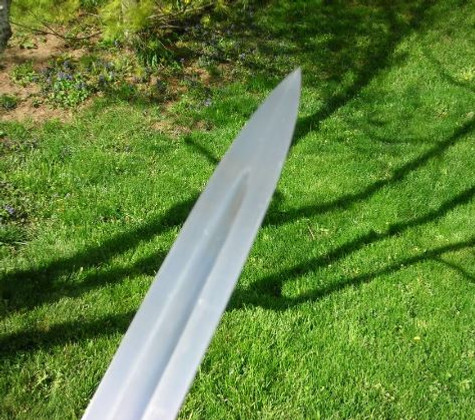Noticing When Your Sword's Blade is Becoming Dull
Posted by Sword N Armory on May 14th 2019
The following article will discuss some of the important indications that the edge of the sword is losing its efficacy and becoming dull. There are a plenty of questionable methods of testing the edge of the blade, many propagated by pop culture.
Nevertheless, cutting a sheet of paper, shaving the hair off an arm and scraping your thumb across the edge of the blade with a sage expression are only part of the test. To properly understand what dulls the edge of a sword, you need to be aware of a few aspects of swordsmanship and sword care that can keep your blade sharp and ready for action.
While the following tips and pointers are specifically geared toward the Japanese Katana, they have also been found effective for a wide range of sword types from the Gladius to the Rapier. Knowing the design and purpose of your blade is important to wielding and caring for the sword.
ABRASION
If you're practicing cutting with a sharpened katana, you can expect that the abrasive materials you strike will have a serious impact on your sword's edge and eventually it'll deteriorate entirely. Even bound paper and tatami targets can dull the edge of your blade. This is where you can test how dull your blade is by scraping your thumb across the edge of your blade from side to side. You'll notice immediately that harder metals are less susceptible to losing their edge after practice cutting.
ROLLED EDGES
As a novice swords-person practices their strike, they'll invariable turn the blade against their target. When the target has a hard or even medium density the blade can be rolled to the side. Again, this is more common in blades without proper differential hardening. A blade that has been sharpened to too fine an edge will also present this problem. To detect this problem, rub your thumb from the ridge-line to the edge. If you encounter a snag, you have a problem. The rolled edge must be set right before the blade can be sharpened.
FLATTENED EDGE
Those who strike at very hard targets will notice their blade becomes dull very quickly. This can be tough to find with a standard thumb test as the blade can still feel sharp. The best way to notice the flattened edge is with sunlight falling on your steel. When you look straight at the edge you'll see the portions that have been flattened away.
FINAL NOTES ON SWORD CARE
In the end, sharpening a dull sword is an art and science and takes much practice to perfect. Without a proper respect for the geometry of the blade the sword's effectiveness will be neutralized and only professional sword crafters can undo the damage.
Furthermore, every sword will be slightly ruined with each strike made against a target or in swordplay. If you'd like to keep your fine steel sword in good conditions, get yourself a good wooden bokken for swordplay practice. This is the best way to fine tune your skills and keep your blade ready for when you're attacked by dragons and ninjas.












